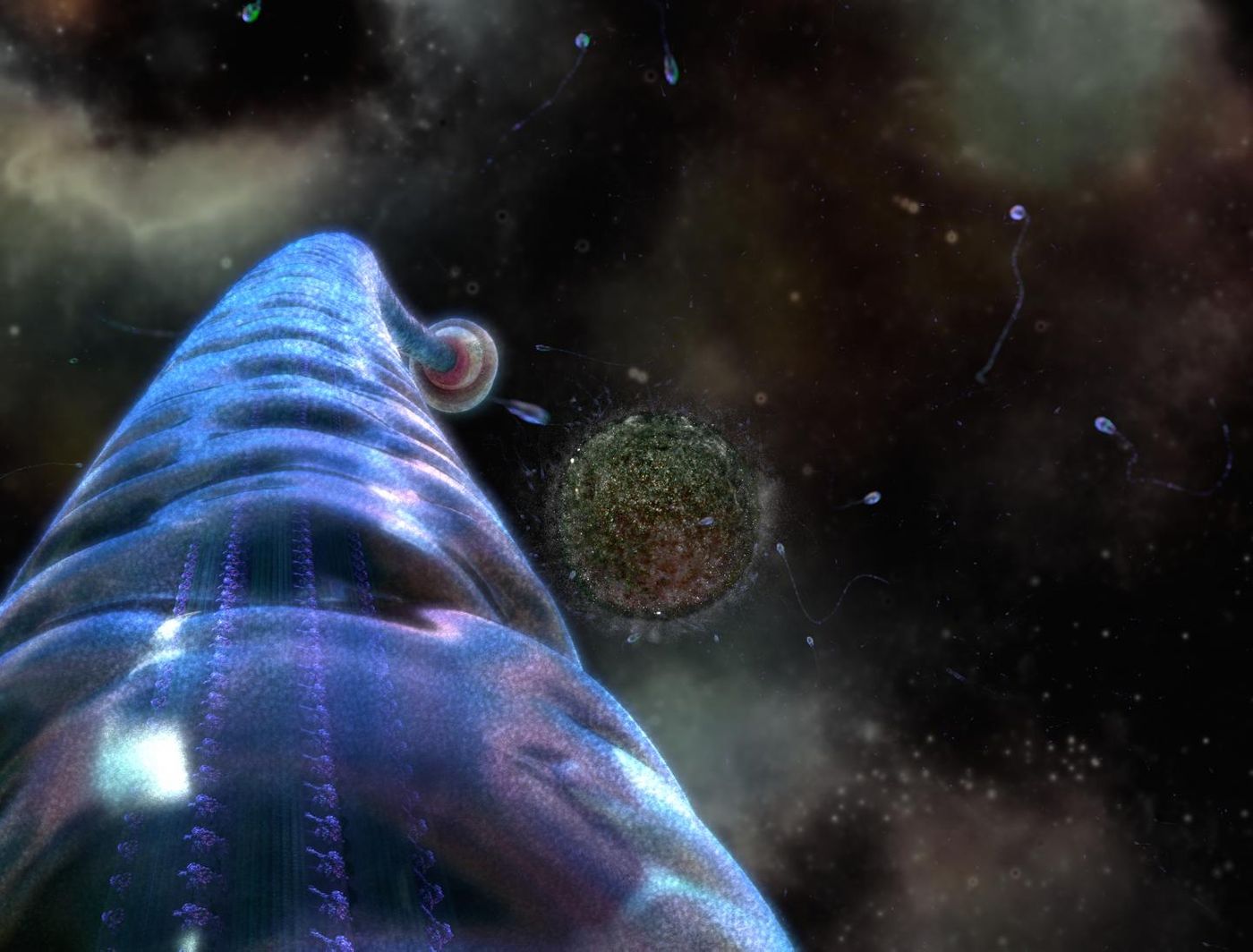Star Wars-Inspired Biological Animation Leads to Mechanistic Insight
Scientists are trying to reach out to the general public to help people understand more about the work that researchers do. A team at the Wyss Institute at Harvard wanted to bring science education to the masses in a fun way, using a little Star Wars influence. They created a movie that animates the fertilization of an egg by the sperm, and in doing got a look at the biological process in incredible detail. Their work can be seen and is described in the video below, and has been published in ACS Nano.
"I feel that there's a huge disconnect between science and the public because it's depicted as rote memorization in schools, when by definition if you can memorize it, it's not science," explained the Founding Director of the Wyss Institute, Don Ingber, M.D., Ph.D. "Science is the pursuit of the unknown. We have a responsibility to reach out to the public and convey that excitement of exploration and discovery, and fortunately, the film industry is already great at doing that."
Ingber enlisted the help of another Wyss Institute scientist, Charles Reilly, Ph.D., who is a molecular biophysicist as well as a professional animator. His experience working with Peter Jackson of Lord of the Rings fame helped him to excite viewers while creating an accurate depiction, down to the atomic scale.
"Applying an artistic process to science frees you from the typically reductionist approach of analyzing one particular hypothesis and teaches you a different way of observing things. As a result, we not only created an entertaining tool for public outreach, we conducted robust theoretical biology research that led to new scientific insight into molecular-scale processes,” commented Reilly.
The scientists needed to find a way to illustrate the axoneme in the tail of the sperm. The axoneme consists of nine pairs of microtubules, arranged in a circle around a central pair, extending the length of the sperm tail. Small proteins called dyneins that slide along the microtubules. As it slides, the axoneme bends and stretches. Dynein can change shape with the help of a molecule called ATP, which releases energy as it gets converted to ADP, altering the conformation of dynein.
The investigators wanted to model this conversion carefully; they developed a simulation that approximated that transfer of energy from ATP to dynein. Confirming previous work, they found that when loose dynein protein is bound to ATP that releases energy, atoms in the whole protein move randomly. But after attaching a hinge region of dynein to a microtubule and simulating the energy release again, the protein was more restricted, and dynein moved in the way it is known to in nature.
Ingber explained: "Not only is our physics-based simulation and animation system as good as other data-based modeling systems, it led to the new scientific insight that the limited motion of the dynein hinge focuses the energy released by ATP hydrolysis, which causes dynein's shape change and drives microtubule sliding and axoneme motion.”
"Additionally, while previous studies of dynein have revealed the molecule's two different static conformations, our animation visually depicts one plausible way that the protein can transition between those shapes at atomic resolution, which is something that other simulations can't do. The animation approach also allows us to visualize how rows of dyneins work in unison, like rowers pulling together in a boat, which is difficult using conventional scientific simulation approaches," he continued.
The researchers are striving to engage a broad audience through their work.
"Both science and art are about observation, interpretation, and communication. Our goal is that presenting science to the public in an entertaining, system-based way, rather than bogging them down with a series of scattered facts, it will help more people understand it and feel that they can contribute to the scientific conversation. The more people engage with science, the more likely humanity is to solve the world's big problems," noted Reilly. "I also hope that this paper and video encourage more scientists to take an artistic approach when they start a new project, not necessarily to create a narrative-based story, but to explore their idea the way an artist explores a canvas, because that makes the mind open to a different form of serendipity that can lead to unexpected results."
"The Wyss Institute is driven by biological design. In this project, we used design tools and approaches borrowed from the art world to solve problems related to motion, form, and complexity to create something entertaining, which ultimately led to new scientific insights and, hopefully, new ways to excite the public about science," said Ingber. "We've demonstrated that art and science can benefit each other in a truly reciprocal way, and we hope that this project spurs future collaborations with the entertainment industry so that both art and science can get even closer to depicting reality in ways that anyone can appreciate and enjoy."
Sources: AAAS/Eurekalert! Via The Wyss Institute, ACS Nano










